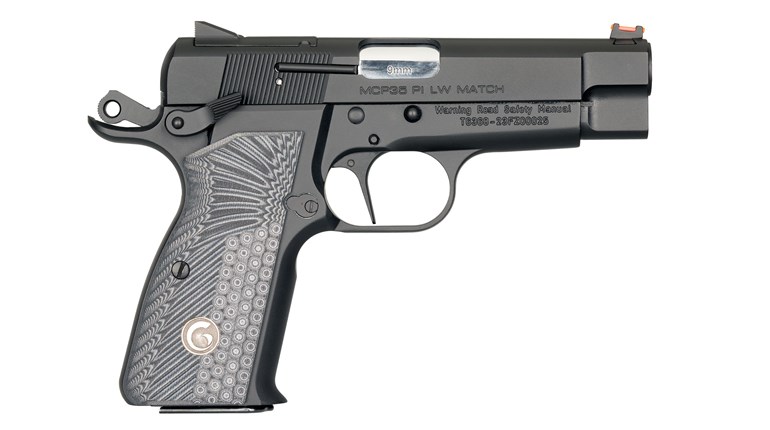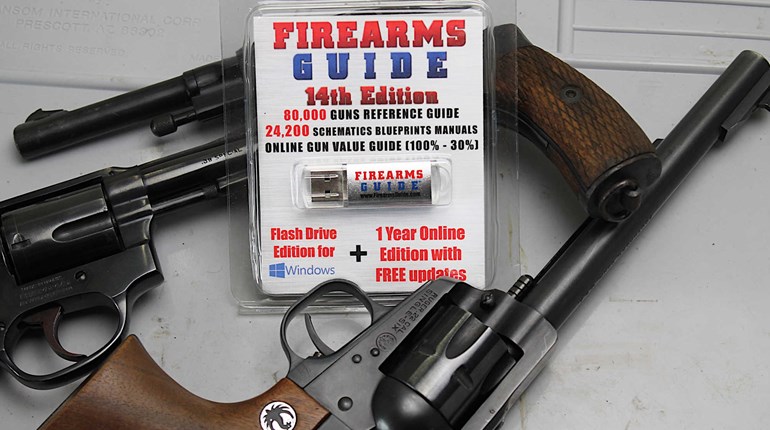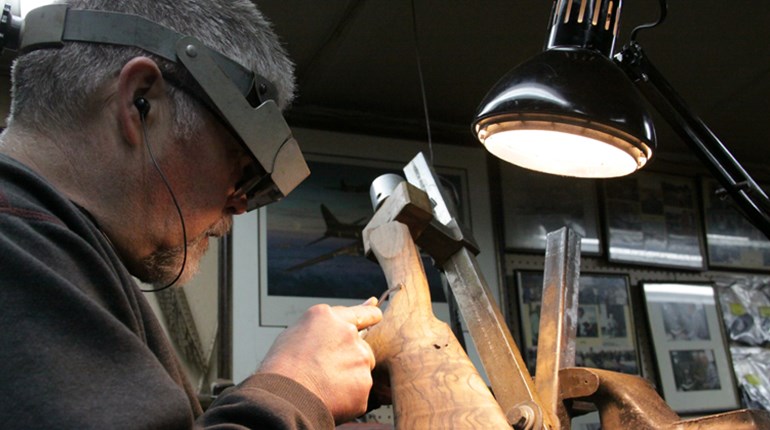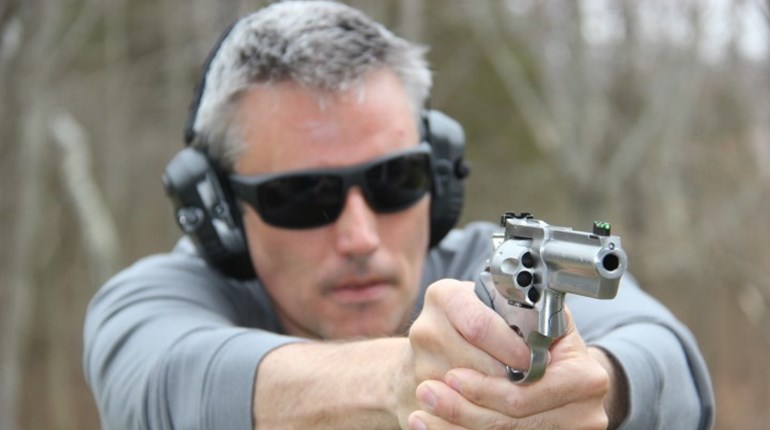
I’m only replacing a handful of parts on this build, and unlike my first foray into building a 1911 or an AR-pattern rifle from scratch, each of which required an extensive assortment of tools along and in some cases many hours of elbow grease devoted to meticulous hand-fitting of parts, Browning Hi Power pistols are known to possess somewhat tighter tolerances, and as such, little to no hand fitting is required. While items such as a bench vise or power tools are not required, they could come in handy. Below is a list of tools and/or resources that could possibly make customizing your Browning Hi Power less time-consuming and a bit easier.
When it came time to locate resources for this project, my first stop was the American Gunsmithing Institute. Having completed two of its at-home armorer’s courses in the past, I was absolutely blown away for the thoroughness of the course material, the level of detail pertaining to the lectures and the top-notch degree of professionalism exhibited by its staff. Yet, much to my surprise, at present AGI doesn’t not offer the same type of armorer’s course for the Browning Hi Power as I had previously completed for the 1911 and the Glock. The closest alternative the firm offers is a single DVD armorer’s course for the Hi Power, presented by the late, great Bob Dunlap that covers assembly/disassembly, and cleaning/maintenance of the pistol—nothing about the fitting or installation of aftermarket parts. While the lighting and production quality of video suggests it was done much earlier than the other AGI courses I’ve completed, the disc does contain the added bonus of a printable technical manual, which is good because unlike for example the 1911, that has a slew of resources from which to choose, there is hardly any technical manuals for the Browning Hi Power. (As I continued my search, I was absolutely shocked to learn that the late, great, Jerry Kuhnhausen did not include the Browning Hi Power among his outstanding, masterfully written compendium of shop manuals.) Could my project be doomed from the start?

Fortunately, a web search revealed a link to an alternative resource: “The Shooter’s Guide to the Browing Hi Power Revised Edition” by the late Stephen A. Camp, which appears to be just what the doctor ordered in the way of comprehensive information, step-by-step instructions complete with detailed photos.
 A conversation with an executive at European American Armory (EAA) surprisingly revealed an extremely useful but unconventional source of information. Following the outbreak of the COVID-19 pandemic, co-owner of BH Spring Solutions LLC (BHSS) Mark Allen decided to make the best of going into lockdown by creating a long series of informative Hi Power-related videos, which he and his partner Slav named BH Hi Power University. So, in addition to being an excellent source for Hi Power tools and parts, the website serves as a fantastic source for knowledge. (At present, the hallowed halls of the university contain more than 30 videos to review, and Searching BH Hi Power University on YouTube indicates the Series has now completed Session 108, and I highly recommend all of them.) Following a lengthy conversation with Mr. Allen regarding this project, he offered to send some components and tools that would be nice to have and others that would be deemed absolutely vital—especially the company’s Deluxe BH Mastertools for Hi Power, which include an invaluable trigger-pin-removal punch and BH’s own rubber trigger-pin-removal punch. (Don’t be fooled, they sound similar—but they are different—and quite necessary to remove stubborn trigger pins that are crush-fit into the frame when installed at the factory, and subsequently a bear to remove.) So, these tools provide an added advantage when on hand, and are a prime example of how to work smarter not harder and are a mere example of the tools BHSS sent to me to use on this project.
A conversation with an executive at European American Armory (EAA) surprisingly revealed an extremely useful but unconventional source of information. Following the outbreak of the COVID-19 pandemic, co-owner of BH Spring Solutions LLC (BHSS) Mark Allen decided to make the best of going into lockdown by creating a long series of informative Hi Power-related videos, which he and his partner Slav named BH Hi Power University. So, in addition to being an excellent source for Hi Power tools and parts, the website serves as a fantastic source for knowledge. (At present, the hallowed halls of the university contain more than 30 videos to review, and Searching BH Hi Power University on YouTube indicates the Series has now completed Session 108, and I highly recommend all of them.) Following a lengthy conversation with Mr. Allen regarding this project, he offered to send some components and tools that would be nice to have and others that would be deemed absolutely vital—especially the company’s Deluxe BH Mastertools for Hi Power, which include an invaluable trigger-pin-removal punch and BH’s own rubber trigger-pin-removal punch. (Don’t be fooled, they sound similar—but they are different—and quite necessary to remove stubborn trigger pins that are crush-fit into the frame when installed at the factory, and subsequently a bear to remove.) So, these tools provide an added advantage when on hand, and are a prime example of how to work smarter not harder and are a mere example of the tools BHSS sent to me to use on this project.
While the aftermarket for Browning Hi Power may not be as extensive as that of the 1911, it is still vast, and two parts I really wanted to use in the build come from Cylinder & Slide (C&S), a name that over the decades has become synonymous with the Browning Hi Power platform. It’s been my experience that the two C&S parts that instantly improve a Hi Power’s handling is the company’s popular BHP No Bite Chamfered Hammer and Sear Set. I already procured a hammer from Brownells, but the sear was listed as being out of stock. So, I called C&S in search of a sear. While conversing with a courteous technician named Bill, I learned the company also offers its own set of a BHP Armorer’s Punch Set. Included are a roll-pin punch for the extractor roll pin, a relieved point trigger-pin-removal punch, a magazine-catch-lock screwdriver, a sear-pin punch and finally, a punch—that when used properly—will keep hammer pressure off the sear to make removal of the sear easier.
Over the years, I’ve reviewed the armorer platform and related tools from Present Arms, Incorporated quite a bit in Shooting Illustrated. Its accessories, gunner’s mounts, magazine posts, pucks and sentinel plates offer a welcome third hand when it is most needed—while keeping your projects parts and those pesky small-but vital fiddly bits safely wrangled and secure. Though the company doesn’t offer a plate dedicated to the Hi Power, I have spent a lot of time working with these top-notch gunsmith aids, and I see no reason why either a Sentinel Plate (either large (SP-2M) or small (SP-1) when paired with a double-stack magazine post such as the MP-2B wouldn’t work well to store the pistol’s parts while securing your frame in an upright position, leaving you with both hands free to clean, conduct maintenance and/or otherwise tinker as needed.
BH Spring Solutions, (BHSS) offers a product that can be used in a somewhat similar but somewhat unorthodox way. Well, they look like an ordinary pair of rubberized magnets that one would mount beneath a bench, desk or table to keep their defensive handgun close and covertly within arm’s reach. Well, in truth that’s what they are, sort of, but when screwed into a wooden board, BHSS’ Fast Access Gun Magnets are a simple, non-marring method of anchoring your Hi Power’s various components, or the completely assembled pistol in either a horizontal or vertical position. In lieu of using a conventional bench vise, and much to my surprise this is the means by which Mark Allen secures his Hi Power’s frame during many of the Hi Power University videos. (…and I thought they sent me run-of-the-mill gun magnets. Shame on me!) Kidding aside, these magnets make for simple and a truly dual-purpose tool, indeed. More tools will be discussed as they are needed.
In the next entry, we’ll cover how to fieldstrip and completely disassemble your Hi Power to begin customization.




































